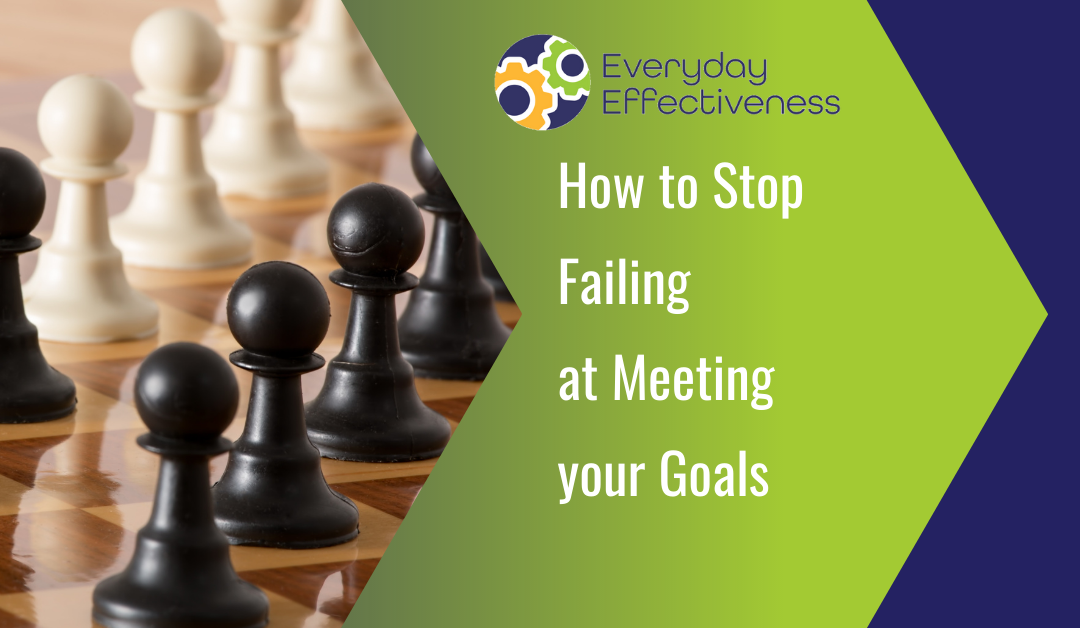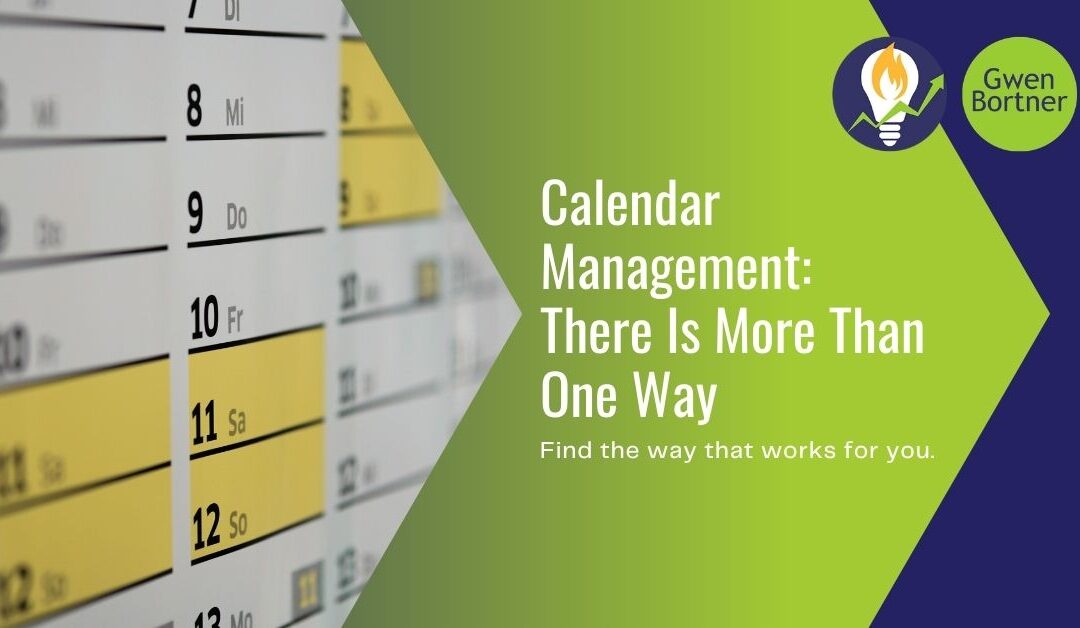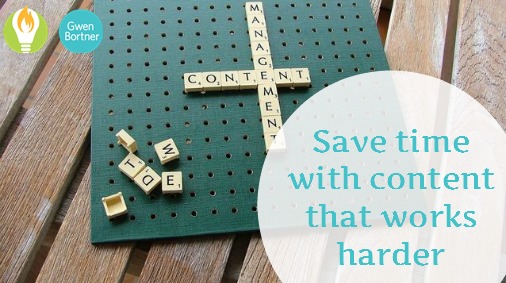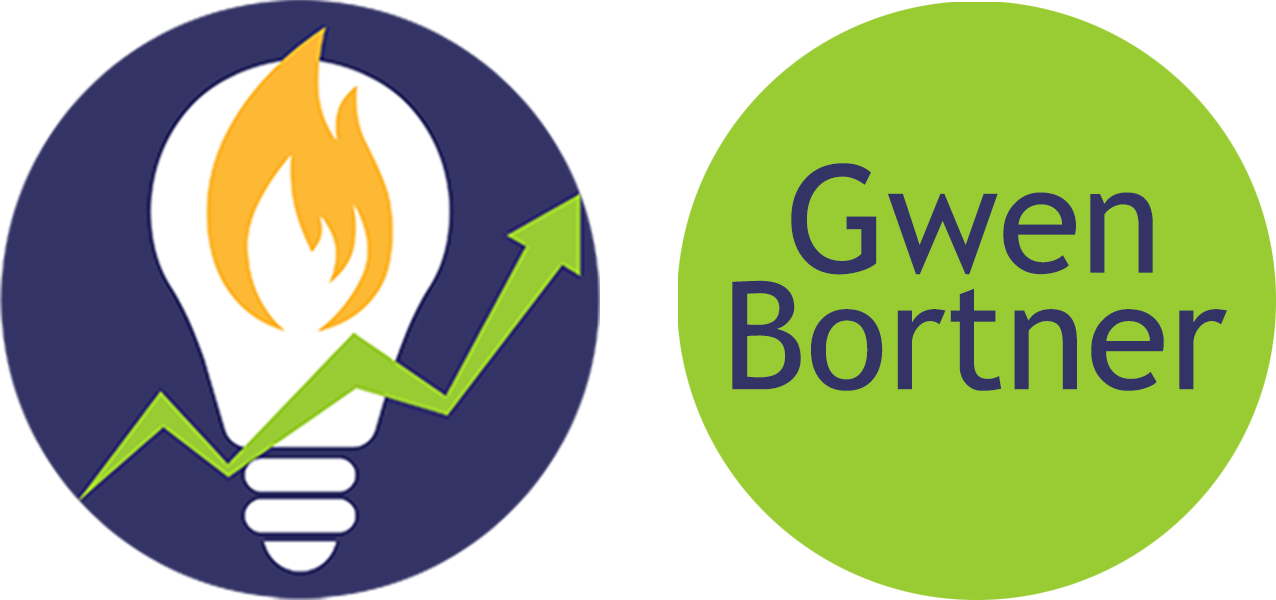
by Gwen Bortner | Office Productivity, Tasks & Goals, Tips & Tricks
Setting goals is great – it feels so good to think about the future and make plans for the greatness you will achieve in the coming year. The hard part comes when you start looking back at the goals you set, and you realize you haven’t met any of them. Stop letting yourself down – learn how to actually MEET the goals you set so that you don’t have to feel like a failure any more!
Here are my best tips for achieving the goals you set for yourself, whether they’re for life or business or both!
Tip #1: Understand whether or not this goal REALLY matters to you.
Often when we fail to reach a goal, it’s because we gave them lip service but weren’t truly inspired to reach them. We thought we should set the goal but as it turns out, we don’t want to actually work with it. So the first step is to eliminate all the goals that don’t actually matter. Though this may *feel* a bit like failing at those goals, in reality it’s more like de-cluttering your goal list so you can focus on working towards the things that matter most.
Tip #2: Keep your goal count low.
When you set too many goals at once, you’re focusing on too many things and you don’t get any progress made. Even if you have several goals in mind, choose just a few to focus on at any one time so that you can make real progress. It’s better to check off your goals one at a time because you can use that progress to motivate you to work toward the next goal, rather than pushing yourself to work on too many projects at once and feeling like you’re never going to finish anything.
Tip #3: Partner with someone who has similar goals.
This type of relationship is called an accountability partner, and it can be really helpful to work together with someone who has similar goals to your own. The concept is most familiar in the form of a workout buddy but it can be applied to any goal. The key is to work toward supporting one another and not turn it into a competition.
Tip #4: Work with someone who can help to push you toward reaching your goal.
Instead of an accountability partner (someone who has a similar goal), this tip is more about finding an outside person to motivate you to work on your goal. It might be a partner or friend or it could be someone like a business consultant or coach.
Tip #5: Set 3-Level Goals.
Todd Herman suggests you should give yourself goals at 3 levels: good, better, best. For instance: the best-case scenario is that you want to lose 50 pounds, but good would be 10 and better is 25. If you ONLY set the highest-level goal then it often takes too long to reach it and it’s easy to get discouraged. But when you reach the good or better goal then that can even be what motivates you to push to the next level.
Tip #6: Look for the WOW Mindset.
Instead of looking at how far you have to go, you look at how far you have already come. Instead of, “I’ve still got 9lbs to lose,” think of it like, “WOW, I lost a pound already!” Looking at your goals from the mindset of the progress you’ve made rather than what’s left to do is a way to encourage yourself to keep making that progress. (This is another of Todd Herman’s great ideas!)
Tip #7: Avoid the OW Mindset.
Herman’s final contribution to this post is the “OW Mindset,” or the idea that all too often we focus on what’s left to come instead of on how far we have already climbed. This tip is the companion to the last one; avoid thinking of the “pain” of what’s to come and instead focus on the success of what you’ve already achieved.
Tip #8: Recommit to your goals on a regular basis.
Review your progress, make adjustments as needed, and keep moving forward. This is the foundation of making actual progress – the process of checking up on the progress you’ve made and reminding yourself why you wanted to achieve that goal in the first place.
Sometimes, reaching the truly important goals requires more motivation and resources than you can drum up all by yourself.
If you’d like some help reaching your goals for 2022, I’m offering a free workshop where I’ll be teaching my 3 best strategies for reducing overwhelm and meeting your goals. Click here to sign up!

by Gwen Bortner | Operations, Tasks & Goals
For as long as I can remember, my productivity has been guided by two things: my task list and my calendar. Depending on my role, one would always be the more dominant over the other. However, over time I have learned that managing them in tandem is almost always the most productive.
There are multiple ways to leverage your calendar to maximize productivity. By understanding the options, the pros and cons of each and your personal work style, you are more likely to select a method that leads to long term productivity.
Chunking Time
Breaking your day into chunks of time to increase productivity is not a new concept. Even so, it is not as widely discussed as some other methods of time/task management.
The basic concept is rather simple:
- Break your day into functional chunks of time (usually 30 – 120 minutes).
- Analyze your levels of focus and productivity for each chunk.
- Assign types of activities to each chunk of time in order to best utilize that time slot.
- Only do those activities until they are done or time is up (whichever comes first).
This type of chunking can be particularly helpful when you have lots of tasks to do and certain types never seem to make it to the top of the list. Even if they only get 30 minutes each week, it is probably more than they would get otherwise.
The downside is, this version might be too restrictive for some types of business ventures.
Another variation of chunking time is to look at bigger chunks of time (1/2 day or full day) and assign larger groups of activities to each. For example, to minimize interruptions, appointments are only to be scheduled on Tuesday afternoons or Thursday mornings. Monday mornings are for planning, strategizing and prepping for the week ahead and so on.
This version has more flexibility within the chunks of time, but still has enough structure to create a framework for productivity.
Another upside is if you are working with others, either in-person or virtually, team members can also have a reasonable idea of what to expect and how to work with you effectively.
The challenge is that it can become too restrictive making scheduling challenging or difficult to complete certain tasks.
Meetings First
If your work requires you to participate in a large number of meetings or appointments, it may make better sense to start with getting those in your calendar first. You can still leverage a bit of the chunking concept by limiting the times people can schedule meetings, but this approach assumes that a large percentage of your work calendar is open.
The challenge is this method can make it difficult to get any task work done. However, a way to minimize this challenge is at the end of each week, block chunks of task specific time for the following week so very few additional appointments can be scheduled. This allows your clients and associates to have reasonable and flexible access, while at the same time ensuring you have some time for task work.
Obviously this method is best for roles that require at least as much, if not more, time allocated to meetings as opposed to getting tasks done.
Scheduling Tasks
Another method for using your calendar to increase your productivity is to actually make an appointment with yourself. Most of us are pretty good at showing up at the designated time/place for a meeting with another person. The concept is to apply the same rigor to your most important tasks. For some, leaving the office and working in a remote location like a library or coffee shop helps in making the “meeting” happen.
This is a great method for who automatically break projects down into milestones or steps and can easily place them on the calendar weeks and months in advance.
The challenge is to hold firm on your own appointments. It can be easy to convince yourself to “reschedule” when something else comes up, but if you are not careful a task appointment will get regularly rescheduled and never get done.
Block and Tackle
The idea of blocking time and tackling tasks is a method that can be used in combination with some of the previous calendar management concepts or on its own. The idea is first thing in the morning to look at the day ahead, given the appointments, work blocks, etc. on the calendar, assign the remaining time slots (usually smaller slots like 15 – 60 minutes), to very specific tasks.
This method works well in concert with other time management techniques like the Pomodoro method. It is also a great way to ensure you make time for your personal activities, like running errands, or ensuring you get to important but less urgent tasks.
Mash-up Methodology
Personally, my favorite is to create a mash-up of several methodologies. I am a firm believer in systems, but I also know that customization is often the key to success. Rarely does one system fulfill all of a person’s needs. But when you combine elements, you get the best of both worlds — systems and customization.
I personally combine the “Meetings First” and “Block and Tackle” methods. Although I loved the concept of chunking time, I could never make it work for myself. As a natural project planner it would seem like scheduling tasks into the future would make sense, but I know that I am not good about honoring appointments with myself. So everything ended up getting moved around anyway. The combination of “Meetings First” and “Block and Tackle” gives me just the balance I need.
The Reality of Managing Your Calendar
The reality is no system is perfect, but systems invariably increase our productivity. We also all have the same number of hours in a day. The difference is seen in how those hours are utilized.
When you realize that your tasks are ultimately part of your calendar, it becomes so much easier to have them work together. And when your calendar and tasks are working together, you will feel less overwhelmed and get so much more accomplished.

by Gwen Bortner | Office Productivity
You start your day feeling excited about a project you’re going to work on for your business. You start working, and after a little while one of two things might happen:
-
You get stuck on an idea and you’re not sure where to go with it; OR
-
You get some sort of interruption in the middle of your working time (email alert, phone ringing, your kid needs something, etc.)
Is this scenario familiar to you? What happens NEXT?
Understand your losses
At this point, you fall down a rabbit hole of distraction. You check your email, answer the phone, browse Facebook “to get some ideas,” or even just get up and switch the laundry or start lunch because you think you need a break.
You are actively working against your own success.
You have lost time, twice:
- The first amount is the time it took you to actually give in to that distraction (20 minute phone call, 30 minutes on Facebook, 10 minutes checking email, etc.).
- The second amount is the time you lost switching back and forth between two tasks; this is the actual time your brain takes to catch back up when you force it into a state of context switching.
Though you might understand the first loss, it’s my guess that you didn’t even realize you were losing that second block.
Get clear.
This table illustrates Todd Herman’s research on context switching:

No matter how much time you have to complete any given task, you automatically lose more than half of it just by adding another task into that time frame. The extra 20% goes to your brain, to allow it to mentally shift gears. As you can see, adding more tasks doesn’t grow in even amounts; the amount of time you lose to context switching increases exponentially every time you add another task.
Let’s say you have one hour to write a blog post. If you give in to 5 interruptions during that hour, you’ll actually only get 3 minutes to work on that blog post out of the whole hour, and you’ll lose 48 minutes of it to context switching. No wonder it feels like you never have enough time to do your work!
Improve your Focus.
How can you solve the problem of context switching?
Make it a habit to turn off your phone, close your browsers, and tell your family members not to interrupt unless there’s an emergency when you’re working. Give yourself the time you need in order to really do your work, and you’ll be amazed at how much more time you feel like you have, because you didn’t lose it to context switching!
How will YOU give yourself the time and space you need to get your work done? If you’d like a weekly reminder to focus on your priorities and take action to move you toward your goals, sign up below for my Weekly Course of Action e-mails. Let’s tackle this, together.

by Gwen Bortner | Marketing, Tips & Tricks
If you’re not a writer by trade, chances are good that when you think about creating quality content for your audience, you start to worry about how much time that’s going to take. While it should take some time to create quality content, the key is to maximize the time you’re spending and get the most out of the content, to make it worth the time it cost you.
Defining Content
For our purposes, the term “content” means,”any educational, entertaining, or inspiring piece of information you put out into the world for consumption by your audience.” A single piece of content could be one page or a 2-minute video, but it could also be a 300-page book or a week-long online course. The first step in maximizing the time you spend creating content is to understand that you don’t always have to go for the longer end of that spectrum; shorter pieces of content are more likely to hook your audience and keep their interest all the way through.
Types of Content
Content comes in as many forms as there are ways to communicate – written word, audio, video, and visual images all make up the spectrum of content formatting. The main types of content you can harness for your business include:
- newsletters/e-mail
- blog posts or website pages
- opt-ins (lead magnets)
- nontraditional content*
- paid content
If you learn how to make these different types of content work together, that’s the key to maximizing your time.
Tips for Maximizing Content
Create ONE main piece of content, and use it in a variety of ways to get the most out of it. For instance:
Scenario A: Maximizing Paid Content
Create a piece of paid content, such as an e-book or online course.
Now take one small section of that content (maybe a resource guide, or the first chapter or lesson) and make it into a lead magnet to get people on your email list.
Create a list of questions people have about this product before they buy, and turn each one of those questions into a blog post.
Take the most common question and turn it into a newsletter topic, really digging deep into your customers’ questions and explaining to them how this product can solve their problems. Then link to the blog posts you created to help answer other questions they may have.
Scenario B: Maximizing Free Content
Think about one big goal your customers have; now, create a series of regular, ongoing content to help them achieve that goal.*
Post this content series on your blog, for free.
In your regular newsletter, talk about the goals your customers have, and then let them know you’ve created this free content to help them achieve those goals.
Make an add-on resource to your free content, such as a workbook or a bonus video, and turn that into your lead magnet for your email list.
Create paid products or services that supplement the process of goal-reaching, for customers who want to go beyond the depth of the free content.
*Ideas for Nontraditional, Free Content:
- an audio or video podcast that breaks down the topic into easily-completed steps
- a social media challenge, such as posting a photo every day to Instagram
- a “mini course” or workshop with one new lesson each day for a week, month, etc.
- a book club, where members can come together to study topics that are interesting to them (Sound familiar?)
- a private online group (like a Facebook group or membership site) where they can come together to discuss their goals with people who are working on similar goals
- a _____-along (read-along, knit-along, quilt-along, de-clutter-along, etc.) – where everyone is doing basically the same thing at the same time and encouraging one another along the way
When you take the time to really plan out your content with a purpose, it becomes easier to see how you can present one piece of content in multiple formats to maximize the time you spent on it AND bring a cohesive theme to your online platforms.
Would you like to work on creating content that establishes you as an authority in your niche and lets you connect with your customers and earn their trust? Join us in June as we study Epic Content Marketing for the Small Biz Book Club!

by Gwen Bortner | Office Productivity
These days, people treat multitasking like it’s a special talent; if you’re good at doing multiple things at once then that must make you a valuable and productive worker, right? Actually, that’s completely wrong.
Multitasking isn’t making us more productive; in fact, it’s doing exactly the opposite. According to INC, multitasking leads us to:
- a 40% drop in productivity
- 50% more time taken to accomplish a single task
- 50% more errors made while doing that task
So even though it may feel like you’re accomplishing more (because you’re working on more than one thing), you’re actually losing quite a bit of productivity when you focus on more than one thing at a time.
The Curse of Creativity
So many of us who lean toward the creative side of things seem drawn to multitasking. It’s not as much fun to focus on one thing at a time when there are so many (new! shiny!) distractions everywhere! Even in our personal hobbies, we often have multiple projects going at any given time, because it’s more interesting to start something new than to slog through something you’ve been working on for a while.
Context Switching
Though we often refer to it as multitasking, the real culprit here is context switching. The idea is that your brain is moving back and forth between thought processes or activities, even if technically you’re only working on one thing. For example: you’re writing a blog post, but your phone dings in the middle of it to let you know you’ve got a message on Facebook, so you stop to check that, and while you’re there you see an ad for those new shoes you’ve been wanting, and by the time you look at the clock you realize you’ve just wasted 30 minutes doing nothing at all.
Do you frequently find yourself jumping from one thing to the next, or are you able to remain focused on one task until it’s as complete as it can be in the moment? Read on for tips on how to increase your productivity by eliminating context switching from your daily routine.
Tips to Minimize Context Switching
- Block out your time. Set aside time for the things that take up time in your day: work tasks, personal or home-related tasks, and even things like checking email or browsing social media. You may tell yourself you’re “not going to check Facebook” during your working time, but let’s face it: you’re doing it anyway. By setting aside “Facebook time” on your calendar, you’re giving yourself permission to do that activity, but during the appropriate time for it.
- Keep your To Do list short. On any given day, you should have a list of no more than three important tasks you want to complete that day. By doing this you can give yourself the time you need to really devote your attention to those tasks, but if you overload your list with too many To Dos, you’ll feel tempted to work on them simultaneously or to switch between them before really completing anything, just to be able to say you worked on each item that day.
- Turn off the distractions. Our phones are like a window to the world outside, but they’re also a pipeline to distraction. You don’t NEED to be notified of every social media post, email, or even text message at any given minute of the day. If there’s a real emergency, someone will pick up the phone and actually call you. Turn off notifications on your phone during working hours, and make sure you don’t have any alerts on your computer.
- Get off the Internet. Having multiple tabs open while you’re working makes it too easy to just “click over for a minute” to check on a website that might distract you from your work. Cut out random Internet browsing during your work time. If you need to maintain a social media presence for your business, try to remember that you’re there for business – post to your own profile or group, but don’t get distracted reading other peoples’ posts.
Bonus “hack” for Facebook: set your Facebook page up so that it only shows you the groups you’re using for work or business, and hides all your personal feeds. That way you can check in for work and check back out again without getting distracted by photos of your best friend’s baby or your cousin’s dinner plate.
What’s the biggest “distraction trap” for you when you’re trying to be productive? Just knowing the answer to that question is the first step in avoiding that distraction in the future!
Would you like to train yourself to focus on what’s most important, and to work on the things that make the most difference in your life and business?
Join us in May for the Small Biz Book Club, where we’ll be reading Greg McKeown’s book, Essentialism. You’ll get a lot of great insights on how to improve your productivity and reduce distraction. Click here for all the details, or sign up using the box below:








